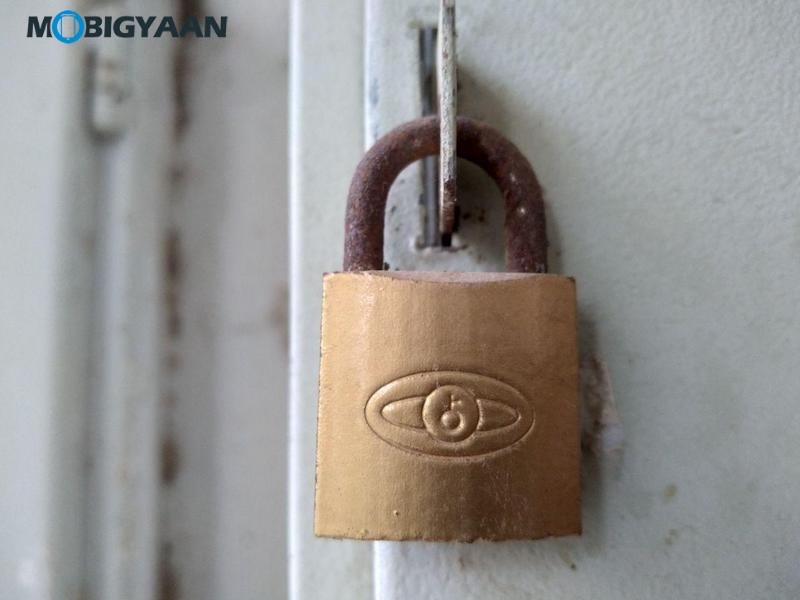Samsung has added another new smartphone in its M series after the launch of the highly promising Galaxy M31. The Samsung Galaxy M11 is an entry-level smartphone with 5,000 mAh battery life and a punch-hole camera design retailed at Rs 10,999. Here’s what we have to say about the Samsung Galaxy M11 in our review.
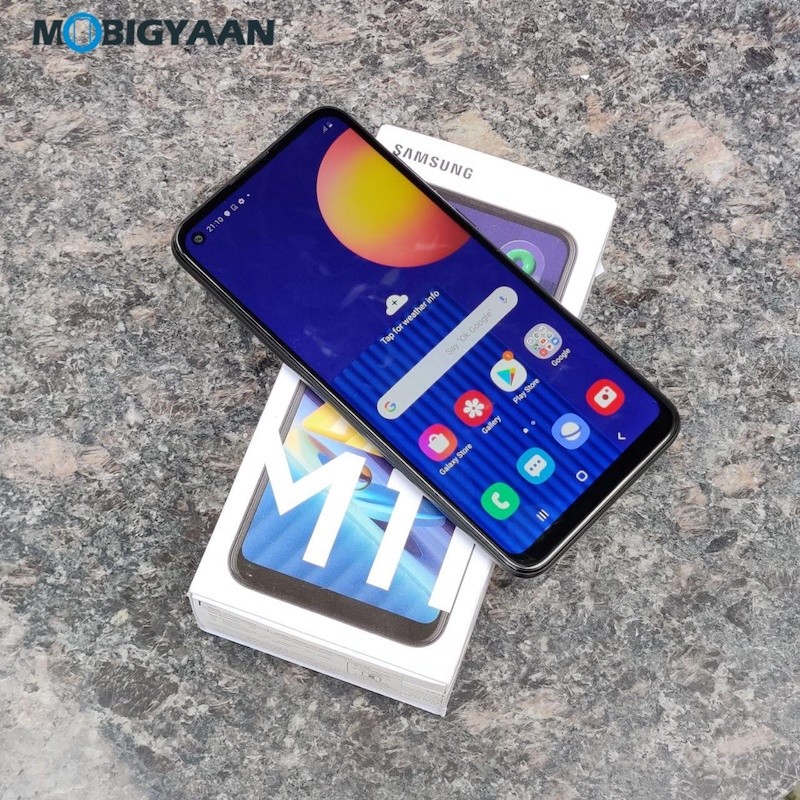
Samsung Galaxy M11 Specifications
- Display: 6.4-inch PLS TFT Infinity-O display, HD+ resolution (1560 × 720 pixels), 19.5:9 aspect ratio
- Software: One UI 2.0, Android 10
- CPU: 14nm Qualcomm Snapdragon 450 SoC
- GPU: Adreno 506
- Memory: 3 GB or 4 GB RAM
- Storage: 32 GB or 64 GB
- Main Camera: 13 MP primary camera with f/1.8 aperture + 5 MP 115° ultra-wide sensor with f/2.2 aperture + 2 MP depth camera with f/2.4 aperture
- Selfie Camera: 8 MP with f/2.0 aperture
- Others: Fingerprint sensor, Samsung Pay, Dolby Atmos
- Connectivity: Dual 4G VoLTE, Wi-Fi 802.11 b/g/n, Bluetooth 4.2, USB Type-C, GPS + GLONASS
- Battery: 5,000 mAh, 15W charging
- Colors: Black, Metallic Blue, Violet
- Price: ₹10,999 (3 GB + 32 GB), ₹12,999 (4 GB + 64 GB)
Design, Display & Build Quality
On the design front, the Samsung Galaxy M11 uses the modern punch-hole selfie camera design. The backside is made of matte finish polycarbonate material with curved edges. The overall design quite identical to the Galaxy M21 and Galaxy M31 is well built.
The front side carries a display with a hole in the screen to accommodate the 16 MP selfie camera. The rear side offers a tri-camera setup with no camera bump, the surface is flat.
The Samsung Galaxy M11 equips a 6.4-inch PLS TFT Infinity-O display with a resolution of HD+ i.e. 1560 × 720 pixels and 19.5:9 aspect ratio. We expected an AMOLED display here, however, Samsung chooses a TFT screen instead.
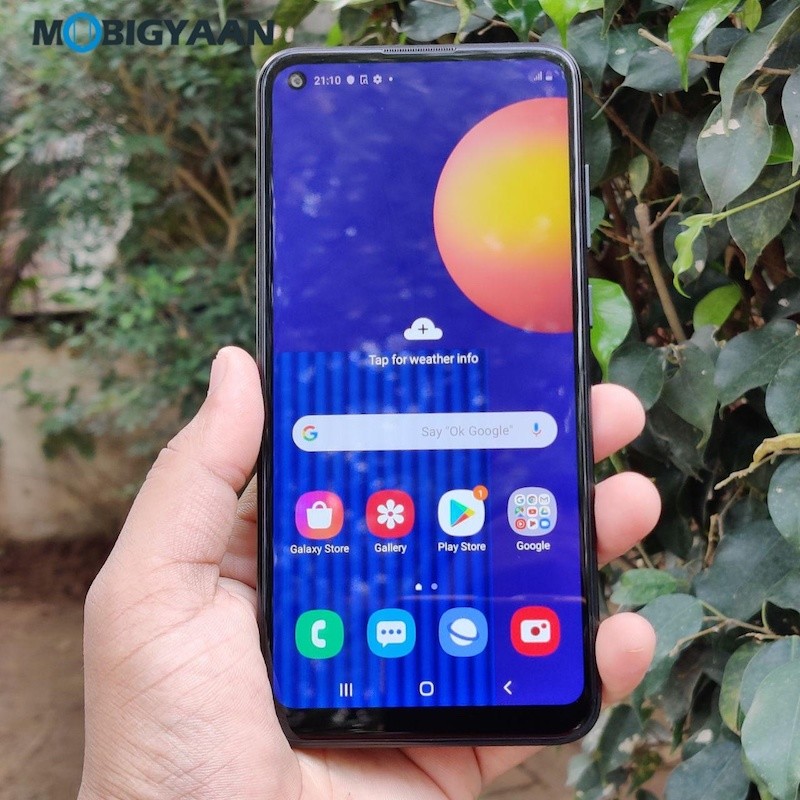
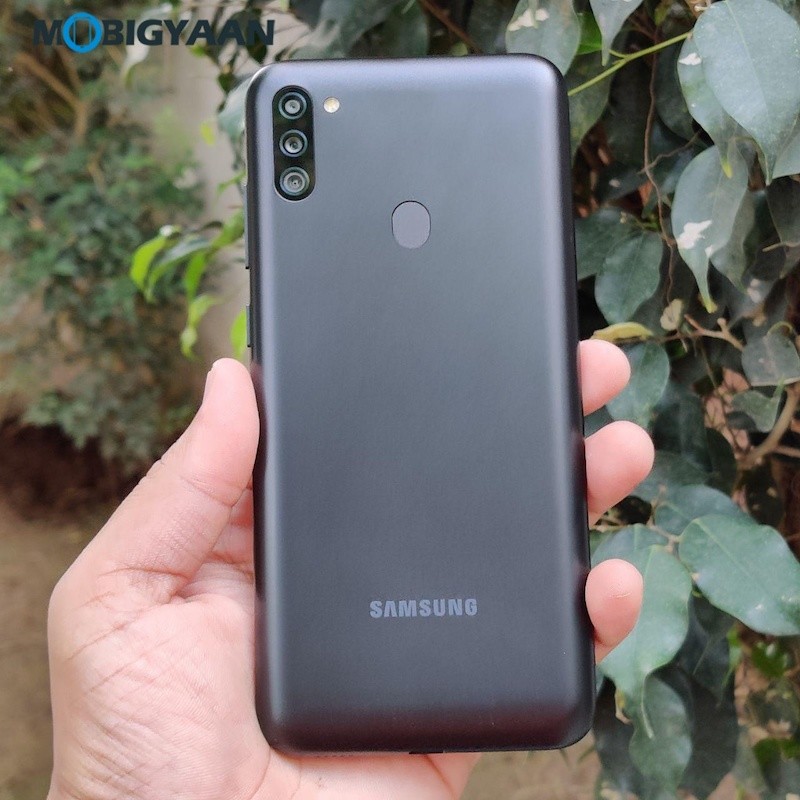
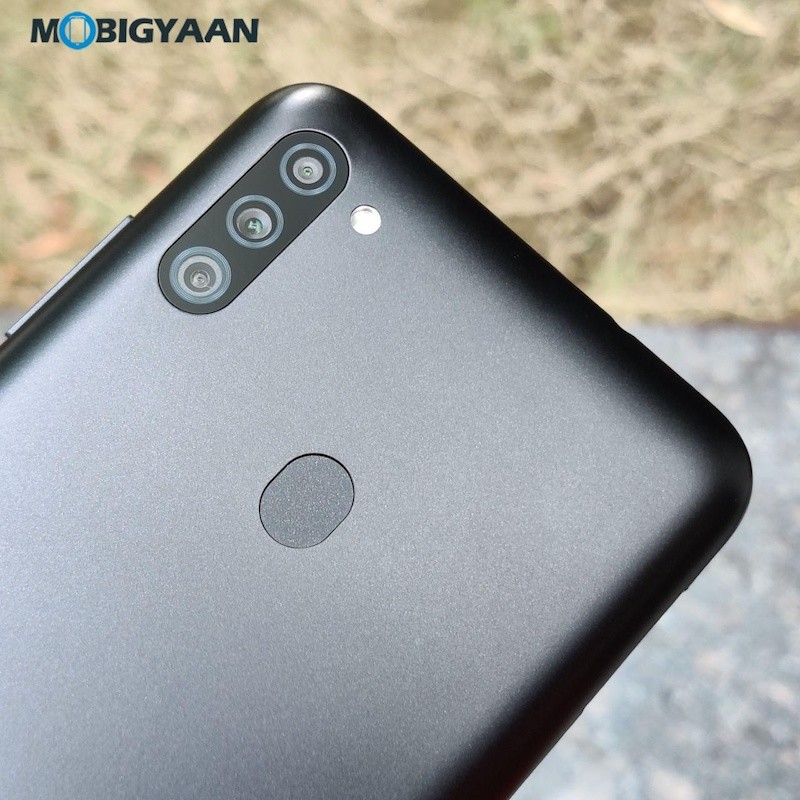
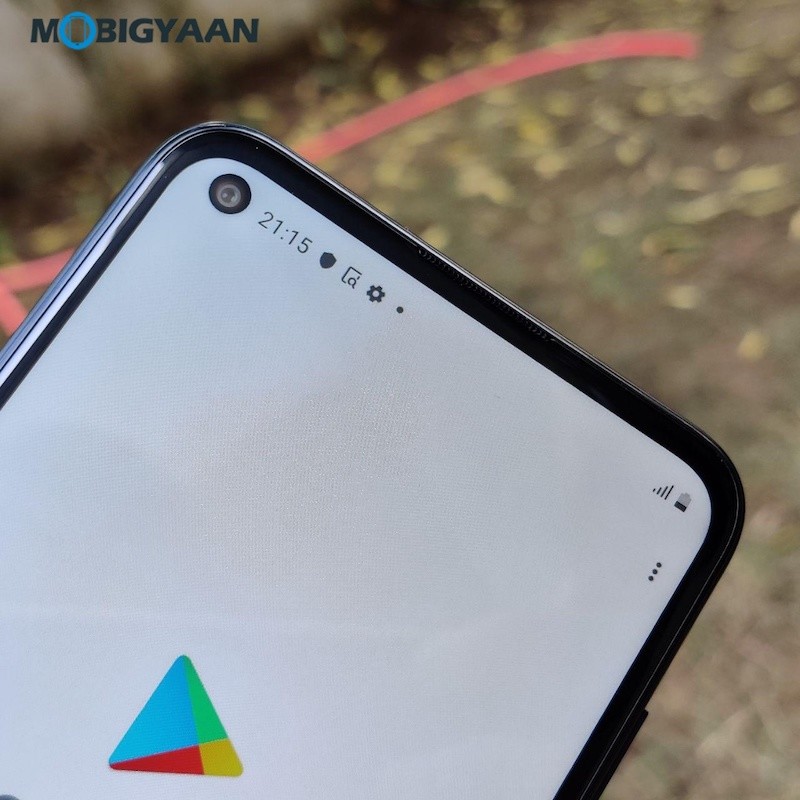
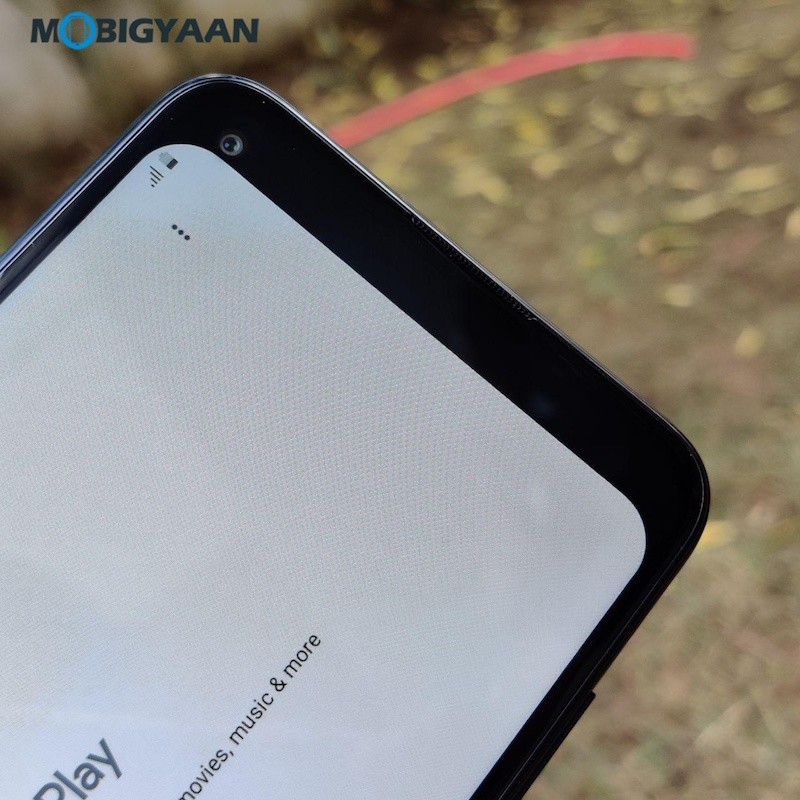
On the right side of the phone, you can see the power button and volume keys whereas the left side has a triple-slot sim tray with a separate microSD card slot.
The bottom has a USB Type-C, loudspeakers, and a microphone whereas the top has another microphone and a 3.5 mm audio jack. The phone doesn’t bundle a protective case and a 3.5 mm earphones.
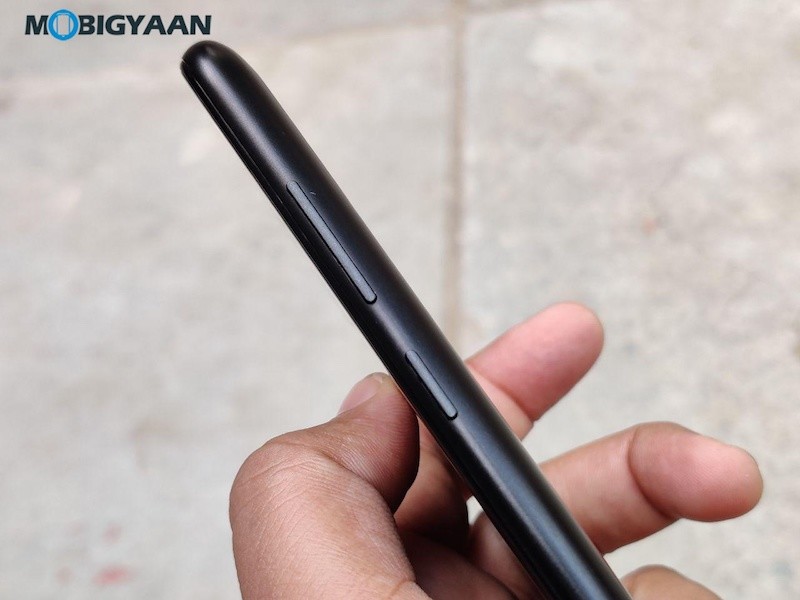
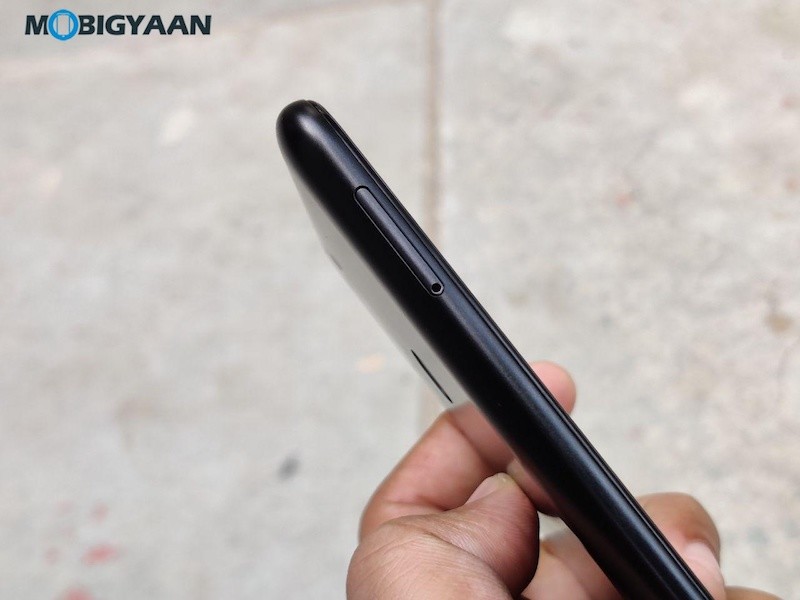
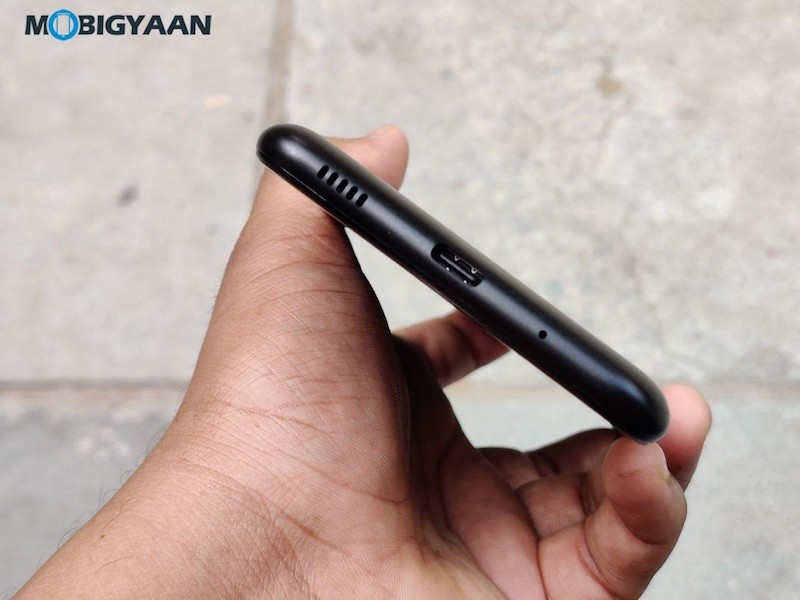
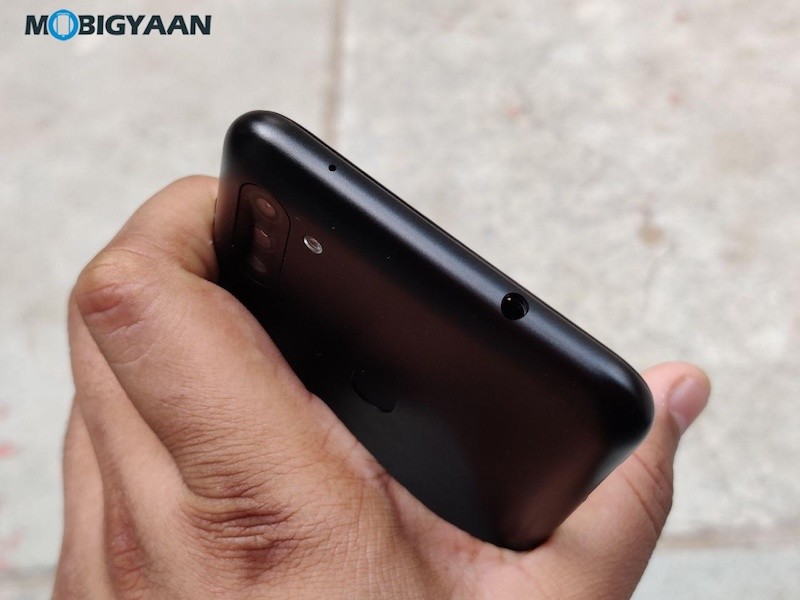
Software & User Interface
The Samsung Galaxy M11, fortunately, comes with the OneUI 2.0 with the latest features and it’s based on Android 10. With Samsung’s new OneUI 2.0, the Galaxy M11 covers several features from the operating system, the interface offers dark mode, blue light filter, smart view, focus mode, and lastly Dolby Atmos.
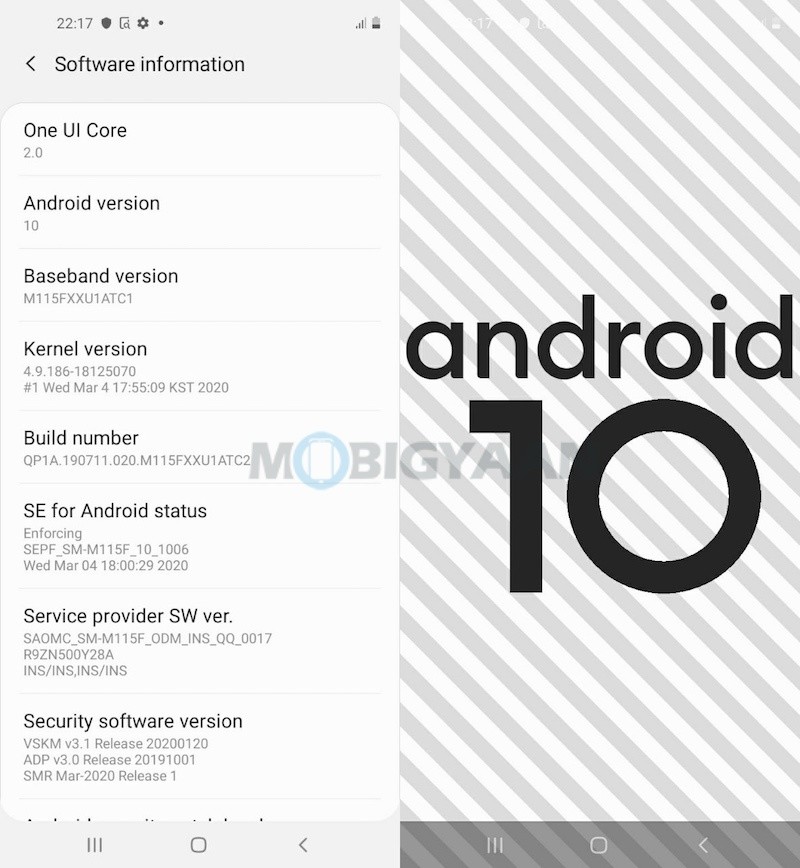
While there’s nothing interesting about the hardware, the software here is really stable, you get the rate feature i.e. Dolby Atmos which should boost the audio quality and give you a good multimedia experience. Other additional features like Always On Display and Edge Lighting isn’t available.
OneUI 2.0 includes bloatware, you will find bloatware on the phone which you can remove if not required. Apps such as Netflix, Facebook, OneDrive comes pre-installed and can’t be removed, but the rest of the third-party apps can be removed.
Even though in our initial usage of the phone, we didn’t find any major lags, expect to get some in case you install more apps and multitask on it.
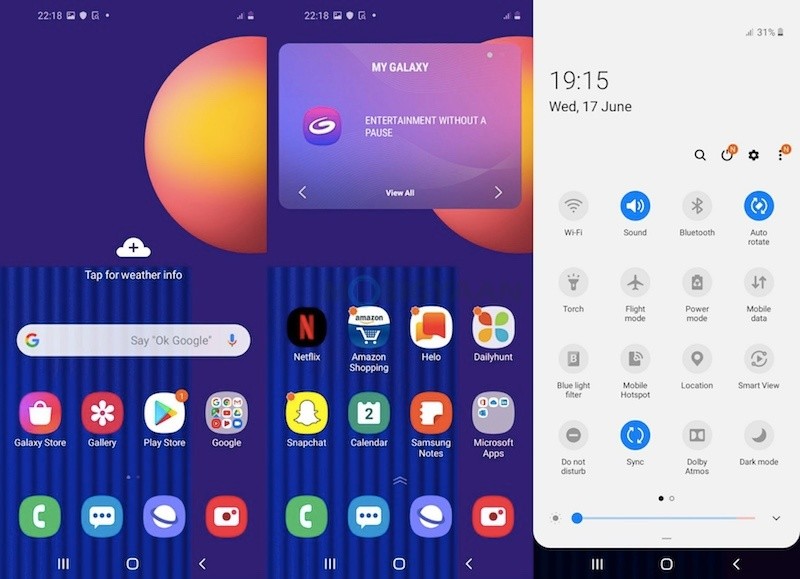
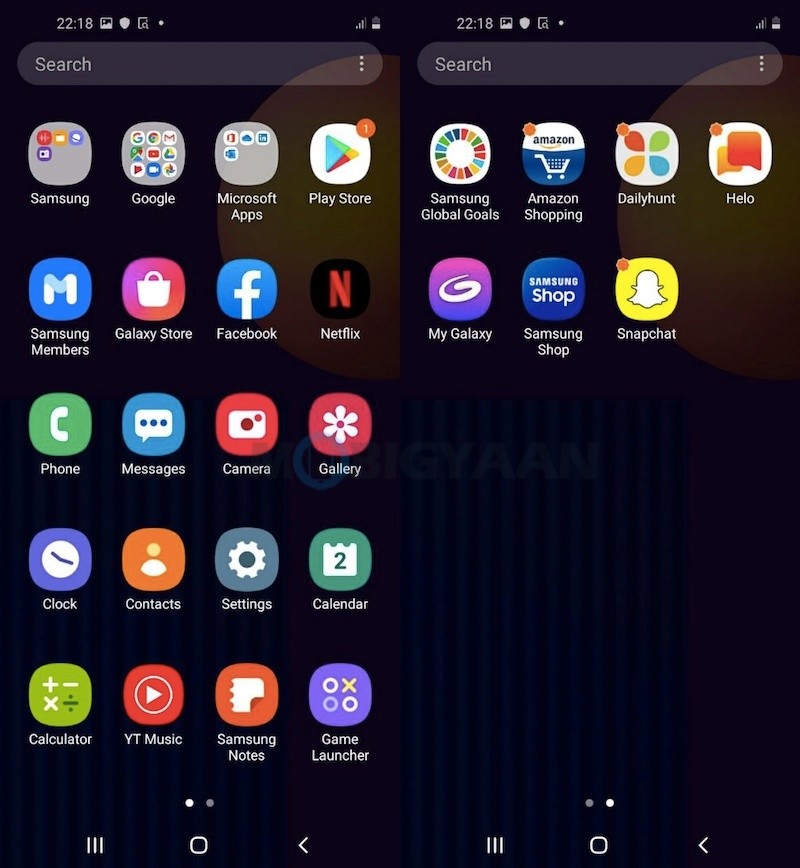
To know more about the OneUI 2.0, refer to our past reviews of the Samsung Galaxy smartphones.
Hardware, Performance, & Gaming
Moving to the hardware and specifications of the phone, the Samsung Galaxy M11 equips a Qualcomm Snapdragon 450 octa-core SoC with 3 GB RAM and 32 GB storage as the base variant and 4 GB RAM and 64 GB storage as the top variant.
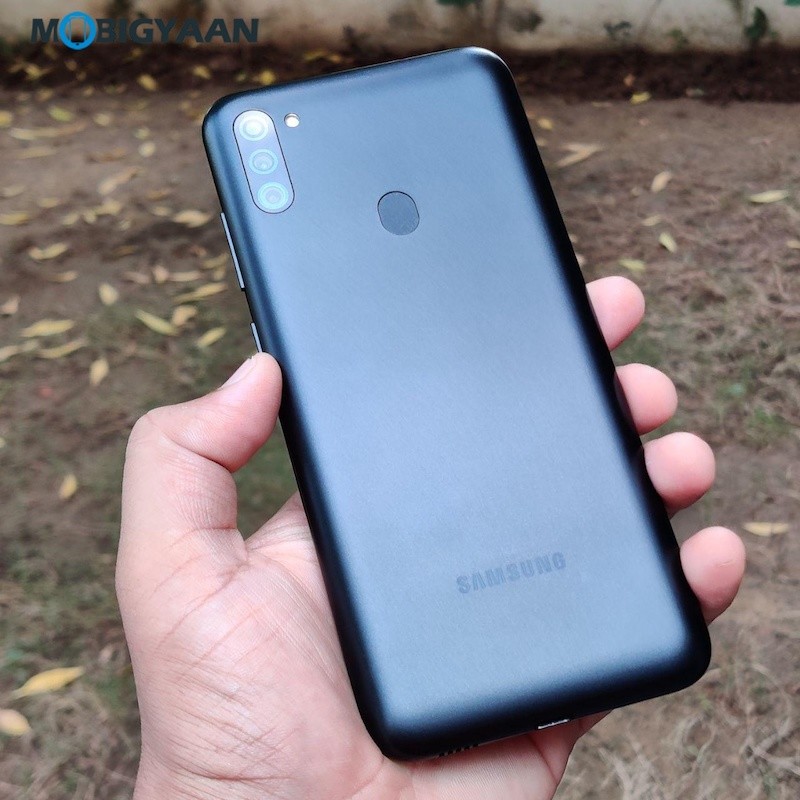
The hardware looks quite obsolete, the competition is way ahead than what the Samsung Galaxy M11 has to offer. The Snapdragon 450 powered phones were first seen in 2017. Samsung already used this chip in its Galaxy J series, the Samsung Galaxy J8 which was announced in May 2018.
There’s no doubt that the Samsung Galaxy M11 is weak when it comes to performance in today’s world, the phones today under Rs 10,000 use far better CPUs. Don’t expect any smooth performance out of it, the Snapdragon 450 is good for basic tasks.
To those who want a better performance especially playing games like PUBG in this range, you still have the Redmi Note 8 with Snapdragon 665, also the newly launched realme Narzo 10 with Helio G80.
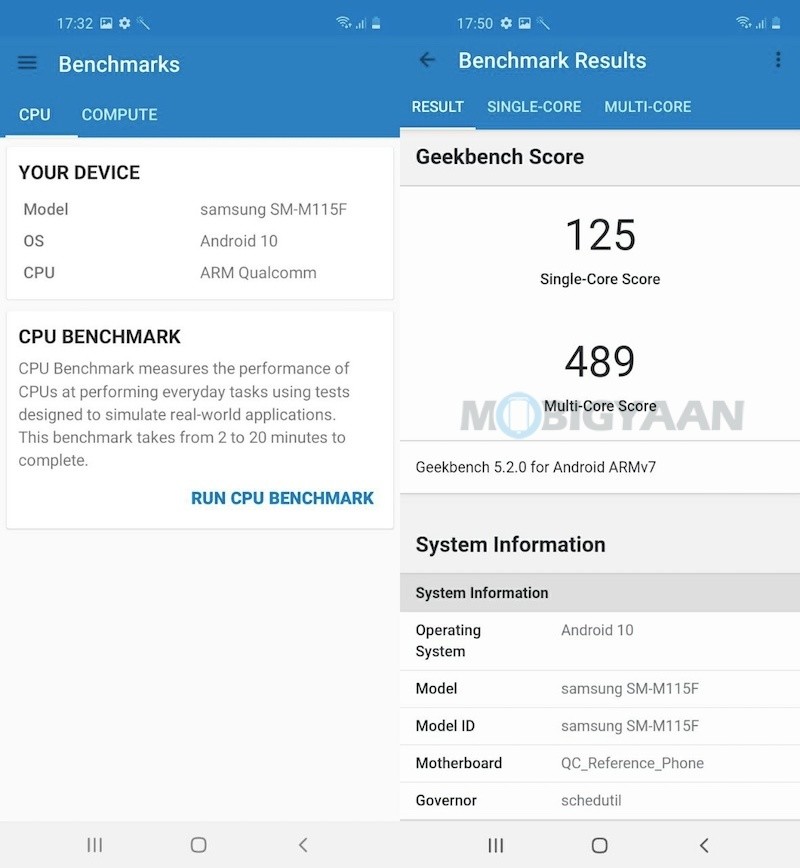
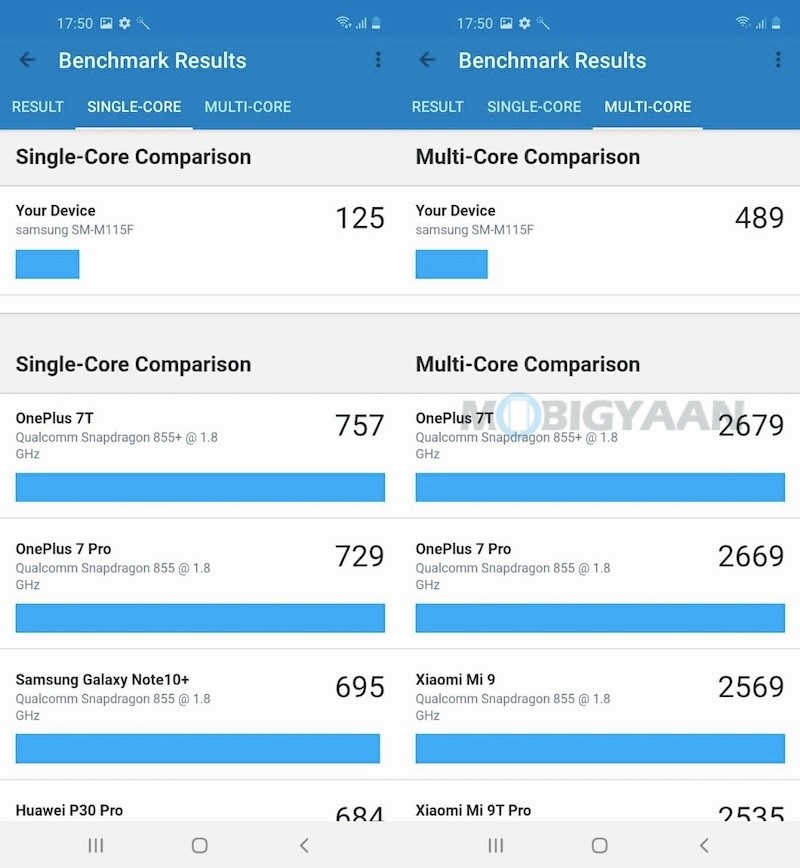
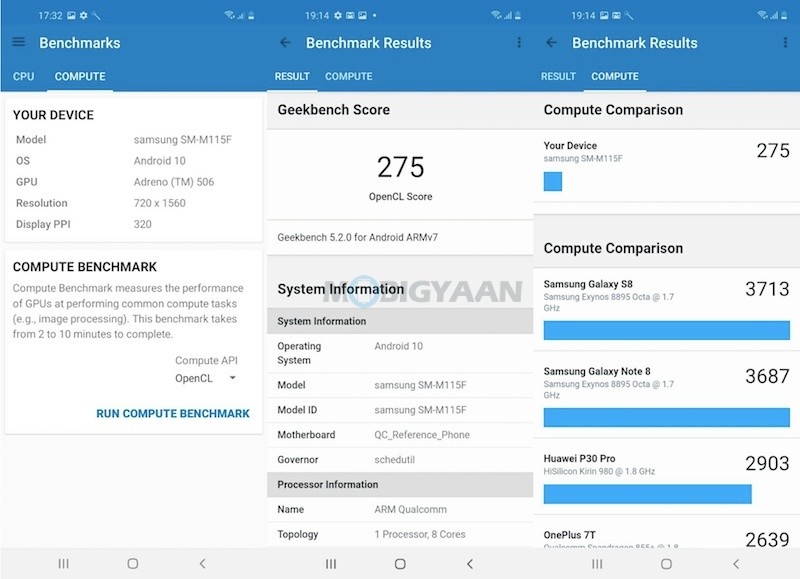
Cameras
Moving to the cameras on the phone, the Samsung Galaxy M11 packs a tri-camera setup. While the competition offers up to four cameras, Samsung sticks to the triple camera setup on the Galaxy M11 and the Galaxy M21.
Specs include the main 13 MP camera for capturing photos and videos, secondary 5 MP camera for capturing ultra-wide-angle photos and videos, and the third camera 2 MP for capturing depth photos i.e. photos with bokeh effect.
The overall camera config is too average, this kind of camera package we used to see on phones in 2018. Nevertheless, current smartphones are already capable of cameras with 48 MP as well as 64 MP sensors.
In the camera interface, you get Live Focus, Ultra-Wide-Angle for both photos and videos, Panorama, and Pro mode. That’s it, no slow motion, 4K as well as 60fps video recording.

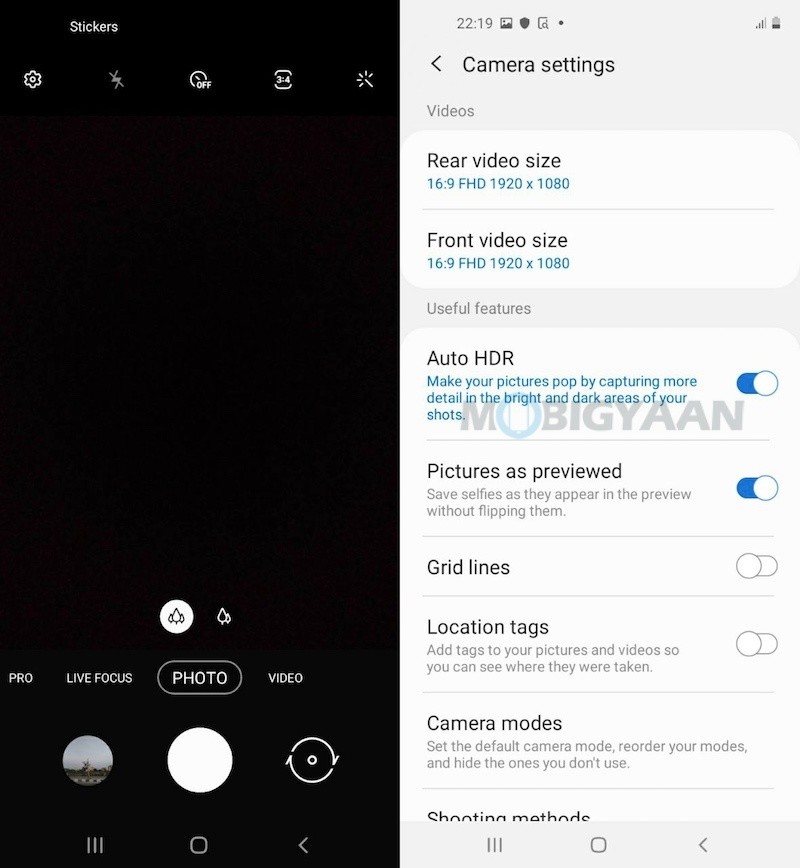
We took some shots to see how good is the camera, take a look. The overall quality of the camera is average, you can get better quality photos on other smartphones in this range.
Samsung Galaxy M11 Camera Samples
Battery Life
The Samsung Galaxy M11 packs a huge 5,000 mAh battery which is sufficient for daily activities, the average use of the phone can get you anywhere up to 2 days of battery life. The CPU draws low power and the HD screen helps to save the battery, hence the overall battery efficiency is increased. For the battery charging, the Galaxy M11 supports 15W fast charging.
Verdict
What’s good on the phone is its decent built quality and curvy design with a punch-hole selfie camera in the display. We would expect an AMOLED display since there’s nothing interesting about the phone, but Samsung chooses a TFT HD screen. You also get Dolby Atmos support, a dedicated microSD card, and a Type-C USB port. The camera performs below our expectation levels and the obsolete CPU led us to a disappointment. If you are looking to buy a phone around Rs 10,000 price tag, the Redmi Note 8 and the realme Narzo 10 are some good choices.
Strength
- Well Build Quality
- Punch-Hole Selfie Camera Design
- Good Battery Life
- Dolby Atmos Support
- microSD Card Support
Weakness
- Outdated CPU
- Mediocre Performance
- Average Camera
- No 4K, Slow Motion, & 60FPS Video Recording
For more updates on the latest smartphones and tech, follow us on our social media profiles.






